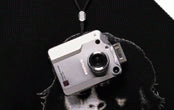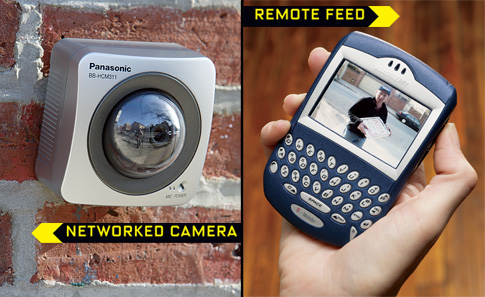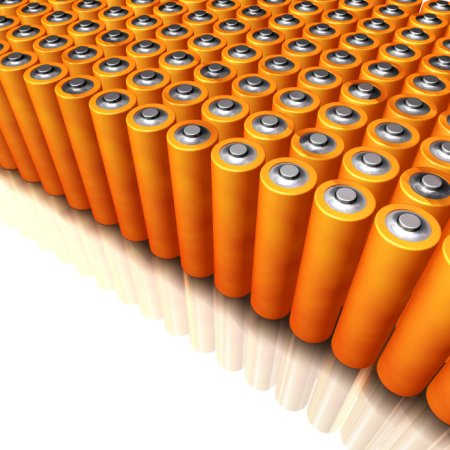

We may earn revenue from the products available on this page and participate in affiliate programs. Learn more ›
I’ll let you in on a little secret. I’m not a photographer. I don’t even particularly like taking pictures. But as an editor covering digital cameras, I’ve dutifully learned about the new image sensor technologies as they’ve arrived, noted the debut of more and more film-camera-type features, and monitored the narrowing gap in quality between the digital and film-based worlds. All the while secretly thanking God that all you really had to know about buying a digital camera was its resolution–how many pixels on its sensor.
But that basic yardstick doesn’t cut it anymore. Digital cameras are evolving from a one-spec wonder into a complex, multifeatured piece of hardware rivaling good 35mm cameras.
How was I to choose a digital camera for the first subject I truly had a vested interest in documenting, the birth of my first child?
Faced with this challenge, and with my delivery date still some months away, I gathered several cameras-the Nikon Coolpix 775, Sony DSC-F505V, Minolta DiMage 7, FujiFilm FinePix 6800, and Canon EOS D30-for some basic research. Each of these cameras offers a couple of features I knew to be important to selecting a camera. But where to go to test them out? The location had to be a place with a variety of light conditions and distances from the subjects. Photographing baby animals at the Bronx Zoo seemed apropos to my circumstances.
A Shot in the Dark
The first stop on my zoo tour was the World of Darkness, an exhibit dedicated to things that go bump in the night-bats, possums, scorpions, but, disappointingly, no babies. The zoo won’t let you use a flash, so the other option in low-light conditions is keeping the lens open for a long exposure. Do I select an auto-exposure mode and hope the experts who built the digital camera will select the correct aperture and shutter speed? Or should I take full manual control? Being a non-photographer, I played it safe, picking up the camera with the most preprogrammed modes, the Coolpix 775. There are a total of seven options (but no bat mode, Robin). I selected night portrait, but found that preprogrammed modes rob you of total control-you can’t even turn off the flash. In this case, fully manual would have been the way to go.
In the Lion’s Den
Emerging out of the gloom toward the African Plains exhibit, I spied a lion lying regally beneath a tree, watching a herd of obviously adult deer-like nyala grazing. It made a nice landscape shot, but in lieu of cubs, I wanted a close-up of the lion. So I pulled out Sony’s DSC-F505V with its Carl Zeiss 5X optical zoom lens. A high-quality lens is the key to a good shot, and essential when you zoom. Before making a buying decision, you should note the number of optical elements in the lens, whether they’re made of glass (ideally) or plastic, and the speed at which they move. Or just stick with a company that’s known for lenses, such as Nikon and Canon, or a high-end lens brand, like Carl Zeiss. But remember, in general you get what you pay for, and the bigger the lens, the better. With zoom lenses, check the optical, not digital, zoom rating, and pick a lens that starts at the widest angle. In 35mm film-speak, that would be 28mm or lower.
Of course, you can always ditch the point-and-shoot and go with an SLR, like the EOS D30. Buying the lens separately is a surefire way of really knowing what you’re getting.
Getting Butterflies
Having bearded the lion, I was ready to take on more delicate subjects in the Butterfly Zone. Not only did I want to get within inches of these beautiful creatures, which requires a macro mode, I actually wanted them in focus. A difficult task considering they’re so flighty, but with a camera like the DiMage 7 that takes photos at a rate of 1.1 per second, one had to turn out.
When you try to get fancy like that, though, you’re talking about delving into a camera’s second- or even third-tier functions. So can you find these features when you want to use them? A camera that’s bristling with buttons leaves you hunting every time you want to do something simple, like preview your last shot. Too few buttons and you have to get inside the head of the guy who designed the camera. Believe me, you don’t want to go there. So spend a little quality time with the back of the camera to see if you can figure out how to access functions without reading the manual. It’s not the thing you want to do in the field. My eye soon found some caterpillars and chrysalises, but they’re not quite what I had in mind for baby pictures.
Winging It
Hoping to find some warm-blooded young, I headed next to the World of Birds. The aviary turned out to be a good place to re-test many of the features I had used at prior exhibits: macro mode for eggs and multi-shot for birds in flight, to name a few. And while not even a shell fragment remained, it was a perfect opportunity to see how well the different image sensors fared.
It’s a given that all else being equal, the higher the pixel count, the higher the quality of the image. Today’s consumer cameras go up to 5.2 megapixels (MP). But what about different sensor types-CCD (charge coupled device), Super CCD, and CMOS (complimentary metal-oxide semiconductor)? The majority of digital cameras use CCD. CMOS sensors are primarily used in low-resolution (sub-1MP) cameras, an exception being the 3.3MP EOS D30. And recent advancements in CMOS technology point to a day when it will dominate. Super CCD sensors are rare, found on a few FujiFilm models like the FinePix 6800. Instead of a grid formation, Super CCDs use a honeycomb pattern that packs the pixels more tightly. The resulting picture looks better because the Super CCD has gathered more light and color information.
A Baby at Last
It was my last stop, but from signs plastered all over the zoo, I knew baby gorilla Suki cavorted in the Congo Gorilla Forest. Would I see her? And if I did, were there enough pictures and battery power left? A quick check of the FinePix 6800 told me I had seven shots left with no low-power icon in sight. I felt good to go.
Memory is always a concern for the digital photographer, because unlike with film, you can’t count on being able to buy more. SmartMedia cards, which the FinePix 6800 uses, have a maximum storage of 64MB, or seven pictures taken at full 3MP resolution. Either stock up on cards or opt for a camera that has a CompactFlash Type II slot, which takes IBM’s 1GB Microdrive for extra memory. Also, as far as battery gauges go, you may prefer a camera with a battery bar or minute timer to just a low-power alert.
In the end, both missions were accomplished. I found Suki in the last exhibit cuddled protectively in her mother’s hairy arms. And after reviewing the pictures I’d taken during the day, some of which came out surprisingly well, I also figured out what was important to me in a digital camera. I want the flexibility of a 3X optical zoom lens while I’m out in the field and the resolution of a 3MP camera for printing enlargements. The camera would preferably have a CF Type II slot, so I don’t have to worry about memory. And while I need a few modes, I want the option of going fully manual. Of the cameras I tested, Minolta’s DiMage 7 most closely fits the bill. I may still have a lot to learn as a photographer, but at least now I know what I’m looking for in a digital camera.
Canon EOS D30
Price $3,500
What it does well
If you’re serious about your photography, take note of this camera’s full manual controls, high-resolution sensor, and ability to take any Canon EF mount lens.
What it doesn’t do
You’ll think twice about lugging this camera and all its attachments along to an impromptu picnic.
Sony DSC-F505V
Price $999
What it does well
If you’ve got to get the shot, you can’t beat the combo of a 5X
optical zoom lens and pivoting viewscreen.
What it doesn’t do
While you can turn off the LCD viewfinder’s backlight to save battery life, you can’t turn off the display completely when taking a picture.
Minolta DiMage 7
Price $1,499
What it does well
This is a no-compromise camera with features like a 7X optical zoom lens, 5.2MP sensor, and a CF Type II slot, for up to 1GB of photo storage.
What it doesn’t do
There’s no optical viewfinder, just an electronic one or 1.8-inch LCD.
Fuji FinePix 6800
Price $899
What it does well
If you’re producing art, not keepsakes, you’ll appreciate this camera’s 6MP shots.
What it doesn’t do
With just a low-power indicator and no battery gauge, you’re left guessing until it’s almost too late.
Nikon Coolpix 775
Price $449
What it does well
As small and light as full-feature cameras get, this Nikon also has enough scene modes to make the non-photographer an expert shooter.
What it doesn’t do
“Lightweight” applies to its pixel count, 2.14MP, as well as its dimensions and weight.









